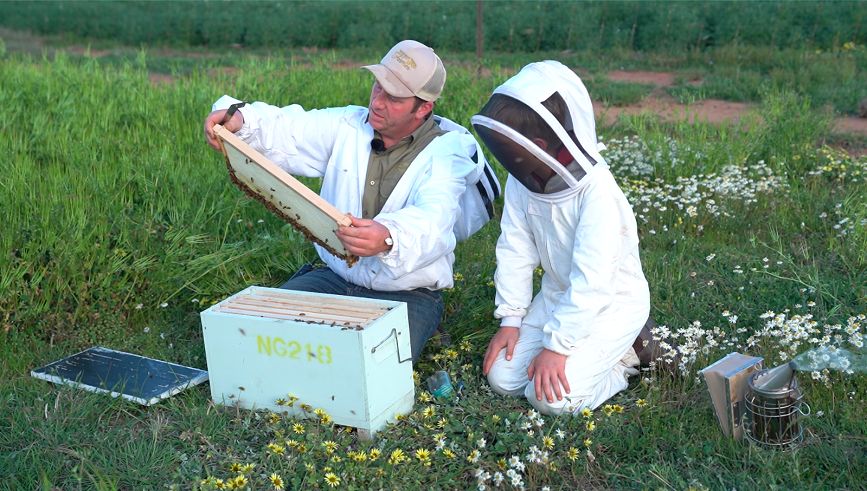Keeping Detailed Beehive Inspection Notes
Ahive inspection involves facing thousands of potentially grumpy bees, lifting heavy hive parts, handling a hot smoker – all while wearing a clunky bee suit to protect yourself. If you’re a new beekeeper, it’s easy to see why taking notes about the experience wouldn’t be top of mind.
But hive notes are one of the most important tasks for beekeepers, new and experienced. Because inspections are complicated and disruptive to your bees, it’s essential to get as much useful information from the experience as you can. Without written or recorded notes, you could end up wasting your time.
Hive notes help you understand what’s happening in the hive, so you can make changes as needed and keep your bees healthy and pest-free.
Why hive notes matter
Hive notes are useful for all beekeepers, but they’re particularly helpful for beginners. That’s because detailed notes help you see patterns over time, building your understanding of what’s going on inside the colony. Without a written record, it can be difficult to remember details or notice changes in the one to four weeks between inspections.
The more you know about your bees, the better you understand how they operate. If you know what’s meant to be happening inside the hive, it’s far easier to pick up on problems early – from a weak queen to invasive pests – and work quickly to sort them out.
What do you need to look for?
There’s a lot to look at when you open up a hive, so it’s smart to have a standard set of factors to record.
Here’s what to include:
Date, time and hive number: these key details ensure that you’re looking at the right notes for the right hive and inspecting at the right intervals. Find out how often to inspect here.
The queen:can you find her, and where is she located? Get queen-spotting tips here.
Brood: how much brood is present? Where is it, how much is capped vs uncapped and is it healthy-looking or not?
Honey:how many frames are full in each of your boxes? If most are nearly full, it’s time to add another honey super.
Crowding:do the bees seem crowded or do they have plenty of room to move?
Queen cells:can you see any large, misshapen cells at the edges of your brood frames? These are queen cells and could be signs of an upcoming swarm.
Temperament:when you open the hive, do the bees seem agitated or calm?
Invaders: can you see any signs of other insects in the hive? A few moths, beetles or other insects aren’t too alarming – but large numbers could be a bad sign.
Irregularities:does anything look odd or off in the hive? Is there a high number of dead bees in and around the hive, deformed adult bees or discoloured brood? These could be signs of disease.
Note-taking tips
When you’re wearing gloves and a bee suit, taking notes can be tricky. Make it easy for yourself by using one of these methods.
Templates:create and print a template with spaces for all your standard checks. Then, you can quickly tick boxes and note down numbers, rather than needing to write full sentences every time. Just make sure to group completed templates in a folder or book so you don’t lose them.
Tech options:many beekeepers avoid writing altogether by using their smartphones. You can either record your notes and listen later on or use a voice-to-text function to make it even easier.
Notebook:traditionally, most beekeepers used notebooks to keep their inspection records. If you have multiple hives, get a separate notebook for each. This way, all your notes for an individual hive are together, making it easy to refer to past notes.
Great notes every time
Tracking your hive over time gives you essential information about your bees. Whether you use a high-tech solution or an old-fashioned notebook, it’s important to take great hive inspection notes every single time – you’ll be glad you did.
Want to find out more about managing your hives? Check out our beginner beekeeping series.

